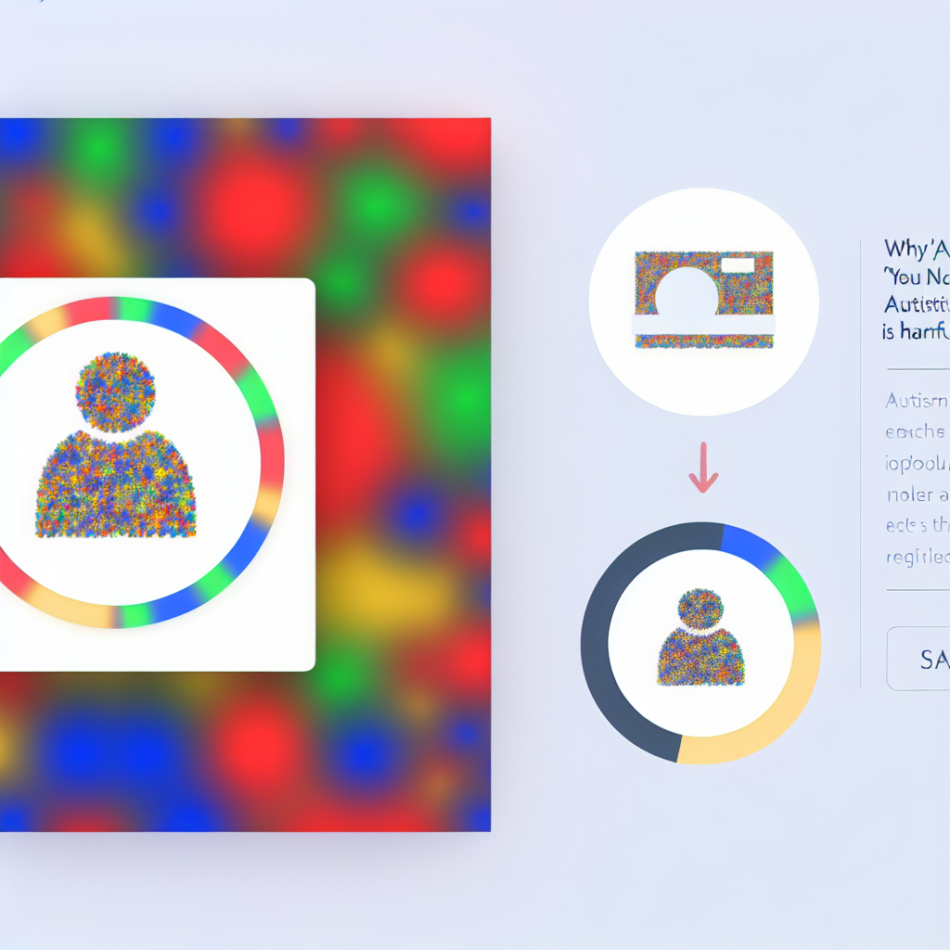“You don’t look autistic.” At first glance, this statement might seem like a harmless remark or even a misguided compliment. Yet, for many autistic individuals, it carries a sting of invalidation. This article explores why such phrases perpetuate harmful stereotypes, erase lived experiences, and reinforce societal misconceptions about autism. By unpacking the implications of these words, we aim to foster a deeper understanding of neurodiversity and challenge assumptions that equate autism with a singular “look” or behaviour.
The Myth of the ‘Autistic Look’
The idea that autism has a specific appearance stems from outdated stereotypes, often rooted in media portrayals of white, male children who exhibit overt traits like rocking or avoiding eye contact. In reality, autism is a spectrum condition, manifesting uniquely in every individual. Traits can range from sensory sensitivities and communication differences to intense interests, but none of these are visually “obvious”. Autistic people exist across all genders, ethnicities, ages, and personalities—and many learn to mask their traits to navigate a neurotypical-dominated world.
When someone says, “You don’t look autistic,” they inadvertently reinforce the false notion that autism is a monolith. This erases the diversity of the community and invalidates those who don’t fit narrow stereotypes. It also overlooks the fact that masking—exhaustively mimicking neurotypical behaviours to avoid stigma—is a survival strategy for many autistic adults, particularly women and non-binary individuals.
The Harm of Invisible Stereotypes
Statements like “You don’t look autistic” imply that there’s a “right” way to be autistic. This creates a harmful hierarchy where only those who match stereotypical traits are deemed “authentically” autistic. For those who don’t conform, their diagnosis or self-identification is questioned, leading to:
- Self-doubt: Individuals may internalise the idea that their struggles aren’t “valid” enough.
- Delayed diagnosis: Clinicians may overlook autism in people who mask effectively or present atypically.
- <strong;>Isolation: Feeling excluded from both neurotypical spaces and autistic communities.
Such comments also perpetuate the myth that autism is a deficit rather than a different neurotype. By framing the absence of stereotypical traits as a compliment, the speaker suggests that being visibly autistic is undesirable.
Impact on Identity and Self-Perception
For many autistic people, receiving a diagnosis is a pivotal moment of self-understanding. It offers clarity about lifelong challenges and fosters a sense of belonging within the neurodivergent community. However, remarks like “You don’t look autistic” can undermine this process. They send a message that the individual’s identity is either invisible or unwelcome unless it conforms to societal expectations.
This erasure can lead to identity conflict. Autistic individuals may feel pressured to “prove” their neurodivergence or downplay their needs to avoid judgement. Over time, this can contribute to burnout, anxiety, and a fractured sense of self. As one autistic advocate put it: “When you say I don’t look autistic, you’re telling me my entire lived experience is a lie.”
The Burden of Explanation
When confronted with “You don’t look autistic,” autistic people often feel compelled to justify their diagnosis. This places an unfair emotional labour on them to educate others while navigating their own vulnerabilities. Consider the implications:
- Emotional exhaustion: Constantly defending one’s identity drains mental energy.
- Power imbalance: The autistic person is put on trial, forced to provide “evidence” of their neurotype.
- Trivialisation: Reducing autism to a set of visible traits ignores its complexity as a lifelong neurological difference.
This dynamic reflects a broader societal issue: neurotypical standards are often treated as the default, while neurodivergent experiences are seen as deviations requiring justification.
Moving Beyond Appearance to Understanding
To create inclusive spaces, we must shift the conversation from how autism “looks” to how it feels and functions. This starts with recognising that autism is inherently diverse and rejecting the idea that there’s a “correct” way to present as autistic. Practical steps include:
- Listening without assumptions: Prioritise autistic voices over stereotypes.
- Educating oneself: Learn about the spectrum’s breadth, including lesser-known traits like alexithymia or executive dysfunction.
- Challenging language: Avoid backhanded “compliments” that equate passing as neurotypical with success.
Ultimately, acceptance means valuing autistic individuals for their whole selves—not measuring them against narrow, often inaccurate benchmarks.
Conclusion: The phrase “You don’t look autistic” may seem innocuous, but it upholds damaging stereotypes and dismisses the rich diversity of the autistic experience. By equating validity with visibility, it marginalises those who don’t fit outdated tropes and perpetuates harmful misconceptions. True neurodiversity acceptance requires moving beyond superficial judgements and embracing the complexity of autism as a spectrum. Let’s replace assumptions with curiosity, and clichés with meaningful understanding—because autism isn’t something to see, but to see someone through.
